Related Research Articles

The Parliament of the Republic of South Africa is South Africa's legislature; under the present Constitution of South Africa, the bicameral Parliament comprises a National Assembly and a National Council of Provinces. The current twenty-eighth Parliament was first convened on 14 June 2024.

The National Council of Provinces (NCOP) is the upper house of the Parliament of South Africa under the (post-apartheid) constitution which came into full effect in 1997. It replaced the former Senate, but is very similar to that body, and to many other upper houses of legislatures throughout the world, in that its purpose is to represent the governments of the provinces, rather than directly representing the people.

The Government of South Africa, or South African Government, is the national government of the Republic of South Africa, a parliamentary republic with a three-tier system of government and an independent judiciary, operating in a parliamentary system. Legislative authority is held by the Parliament of South Africa. Executive authority is vested in the President of South Africa who is head of state and head of government, and his Cabinet. The President is elected by the Parliament to serve a fixed term.
The Premier of North West is the head of government of the North West province of South Africa. The current Premier of the North West is Lazzy Mokgosi, a member of the African National Congress, who was elected premier in June 2024, following the 2024 general election.

The Premier of the Northern Cape is the head of government of the Northern Cape province of South Africa. The current Premier of the Northern Cape is Zamani Saul, a member of the African National Congress, who was elected in the 2019 election. He took office on 22 May 2019.

The Western Cape Provincial Parliament (WCPP) is the legislature of the Western Cape province of South Africa. It is located at 7 Wale Street in Cape Town.
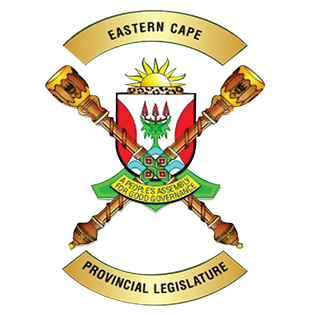
The Eastern Cape Provincial Legislature is the primary legislative body of the South African province of Eastern Cape. It is unicameral in its composition, and elects the premier and the provincial cabinet from among the members of the leading party or coalition in the parliament.
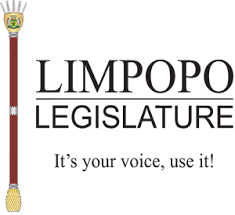
The Limpopo Provincial Legislature is the primary legislative body of the South African province of Limpopo.

The KwaZulu-Natal Legislature is the primary legislative body of the South African province of KwaZulu-Natal. It is unicameral in its composition and elects the premier and the provincial cabinet from among the leading party or coalition members in the parliament. Thami Ntuli of the Inkatha Freedom Party was elected Premier of KwaZulu-Natal at the first sitting of the provincial legislature on 14 June 2024.
A premier in South Africa's provinces is the head of the provincial government. This position mirrors the president's role at the national level, functioning as the chief executive and leading the province's executive council. Premiers are chosen by members of the provincial legislature, typically from the dominant political party. Similar to the President and national cabinet, the Premier appoints Members of the Executive Council (MECs) to oversee various provincial departments.
The Premier of the Free State is the head of government of the Free State province of South Africa. The current premier of the Free State is Maqueen Letsoha-Mathae, who was elected on 14 June 2024. She is a member of the African National Congress.
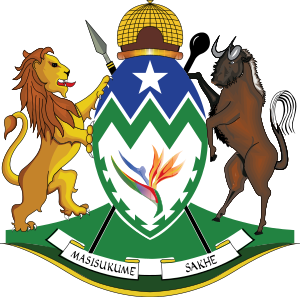
The Premier of KwaZulu-Natal is the head of government of the KwaZulu-Natal province of South Africa. The current Premier of KwaZulu-Natal is Thami Ntuli, a member of the Inkatha Freedom Party. He took office on 18 June 2024.

The Premier of Limpopo is the head of government of Limpopo province of South Africa. The current Premier of Limpopo is Phophi Ramathuba, a member of the African National Congress, who was elected on 14 June 2024, following the 2024 national and provincial elections. She is the first woman to hold the office.
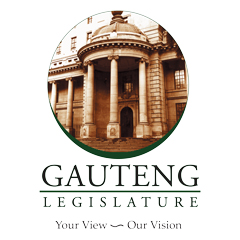
The Gauteng Provincial Legislature is the legislature of the South African province of Gauteng. It is a unicameral body of 80 members elected every five years. The current legislature, the seventh, was elected on 29 May 2024 and is a hung parliament with no overall majority for any party, with the African National Congress having lost its previous majority, but remaining the largest party with 28 members. The legislature is housed in Johannesburg City Hall in central Johannesburg.
The provincial councils were the legislatures of the four original provinces of South Africa. They were created at the foundation of the Union of South Africa in 1910, and abolished in 1986 when they were replaced by a strengthened executive appointed by the State President. The four provincial councils were the Cape Provincial Council, the Natal Provincial Council, the Transvaal Provincial Council and the Orange Free State Provincial Council.
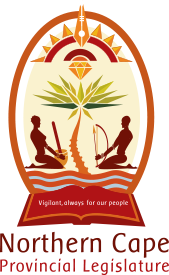
The Northern Cape Provincial Legislature is the legislature of the Northern Cape province of South Africa. It is a unicameral body of 30 members elected every five years. The current legislature was elected on 29 May 2024 with the African National Congress getting the most seats. It is situated in Kimberley, in a newly built complex to the west of the city centre on the edge of Galeshewe.

The North West Provincial Legislature is the primary legislative body of the South African province of North West. It is unicameral in its composition, and elects the premier and the provincial cabinet from among the members of the leading party or coalition in the parliament.

The Free State Provincial Legislature is the primary legislative body of the South African province of Free State. It is unicameral in its composition and elects the Premier of the Free State, who in turn selects the members of the Executive Council of the Free State.

The Mpumalanga Provincial Legislature (MPL), previously known as the Eastern Transvaal Legislature, is the primary legislative body of the South African province of Mpumalanga.
The North West of South Africa is governed in a parliamentary system in which the people elect the North West Provincial Legislature and the legislature elects the Premier as head of the executive. The Premier leads a cabinet of MECs overseeing various executive departments. The provincial government is subject to the Constitution of South Africa.
References
- ↑ Chapter 6: Provinces , Constitution of the Republic of South Africa, 1996.
- 1 2 "Seat calculation - National Assembly and Provincial Legislatures" (PDF). Independent Electoral Commission. Archived from the original (PDF) on 9 June 2024. Retrieved 24 May 2024.
- ↑ Schedule 1 to the Electoral Act, 1998, as amended
